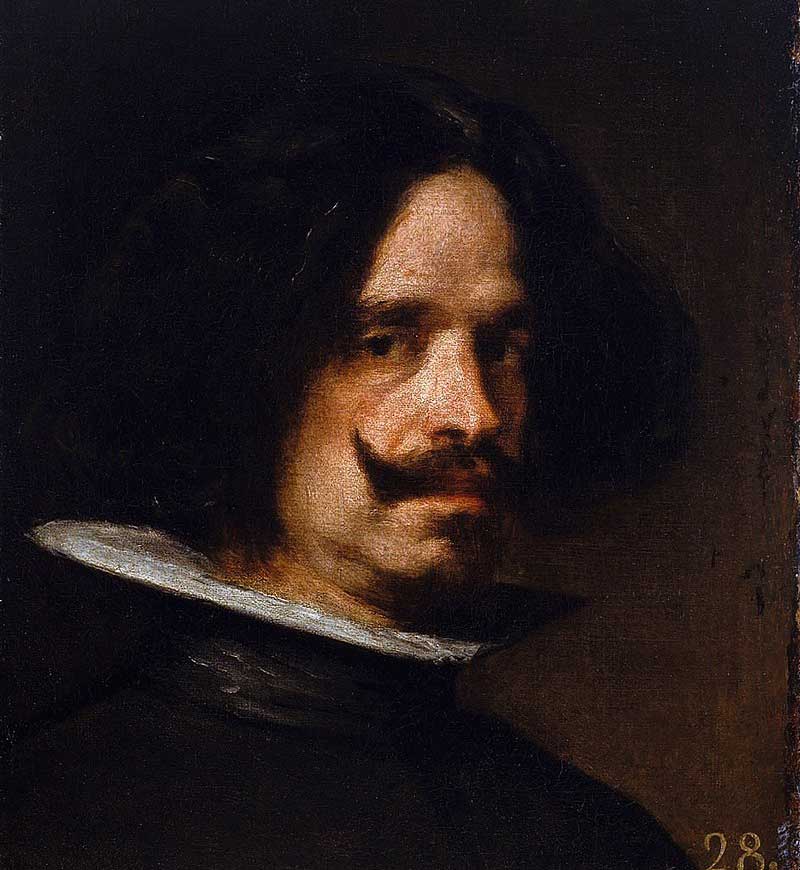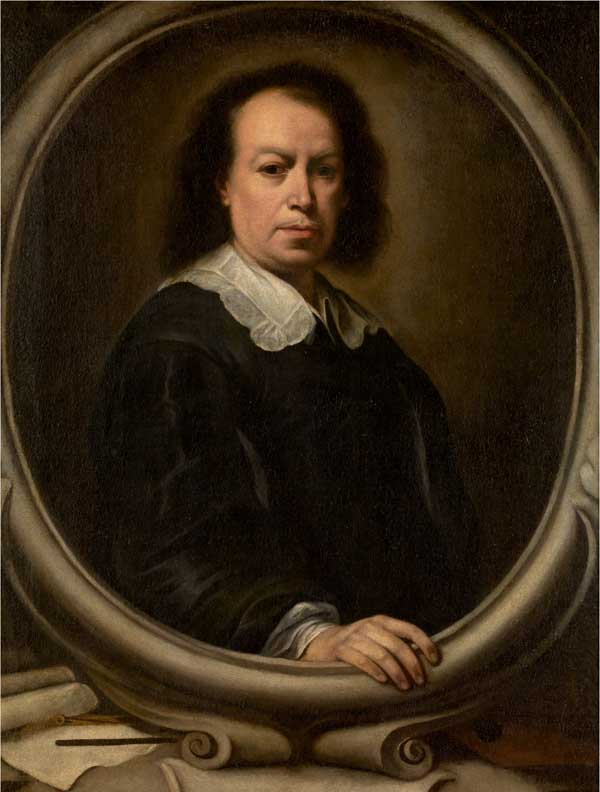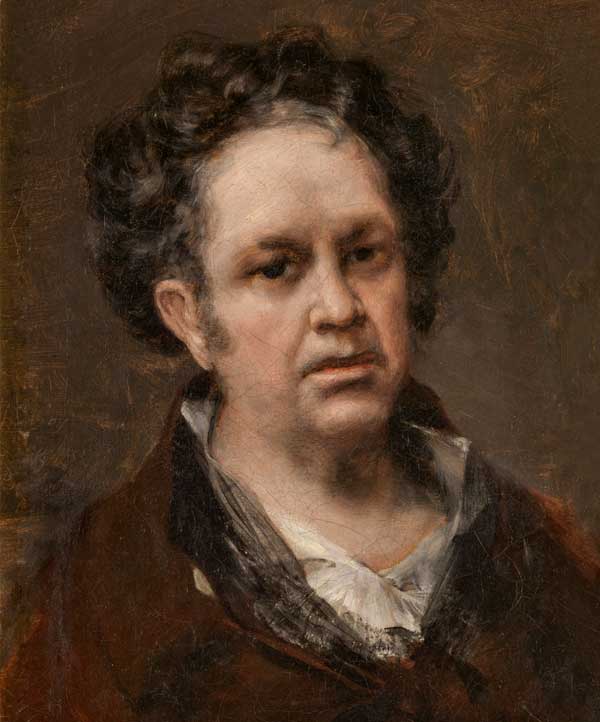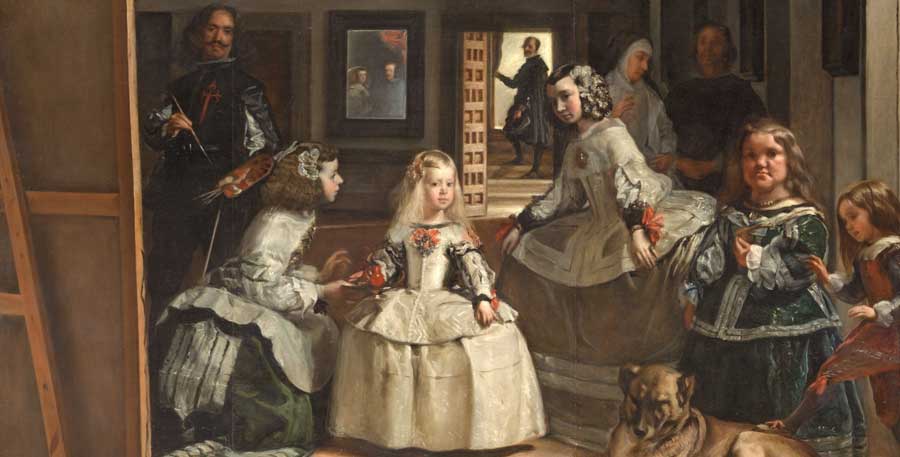This blog of Madrid Museum Tours is not going to discover anything new about Spanish Art. Nor it will unveil secrets about Spanish painters masterpieces. We will only share with you some of the things we like best about the most famous Spanish painters. Let’s get to it.
 Diego Rodriguez da Silva Velazquez was the perfection of painting art. Same like Beethoven, who was perfection in music. Of all famous Spanish painters Velazquez is also the very mysterious one. Not because of some secrets, but of his unmatched genius. Velazquez’s masterpieces show that perfection can shake us with emotion. Check Las Meninas, for example. Its composition of space, light, vanishing points, characters, pictorial abstractions, technique are overwhelming. And more things. Like the bold violations in his works that clashed with the Burgundy protocol which ruled the Court of the Austrias. In fact, one gets breathless before the superhuman semblance of Velazquez artistic genius.
Diego Rodriguez da Silva Velazquez was the perfection of painting art. Same like Beethoven, who was perfection in music. Of all famous Spanish painters Velazquez is also the very mysterious one. Not because of some secrets, but of his unmatched genius. Velazquez’s masterpieces show that perfection can shake us with emotion. Check Las Meninas, for example. Its composition of space, light, vanishing points, characters, pictorial abstractions, technique are overwhelming. And more things. Like the bold violations in his works that clashed with the Burgundy protocol which ruled the Court of the Austrias. In fact, one gets breathless before the superhuman semblance of Velazquez artistic genius.
Velázquez could have been a time traveler into the future. He would have known the impressionists and abstracts. The photo camera and the one for making movies. Although, using our imagination, the opposite would be more likely. Inventors would have travel to the past in H.G. Wells Time Machine. They would have learned from Velazquez the snapshot, the ‘in focus and out of focus faces’ in the same shot. As a product of such a journey, Edwin H. Land would have invented the Polaroid. Although never would an instant photo with a Polaroid equal the prodigious snapshot of Velazquez Bacchus Feast
The Spinners highlights some unfocused faces both in the foreground and in the background. Lázló Nemes, the movie director of Saul’s Son, knows very well how to use the long lens to produce out of focus subjects. Yet, neither Nemes, Orson Welles nor Murnau, among many other celeber movie directors, were able to reproduce Velázquez optical effects. Only computer-generated images could emulate it, but lacking any artistic effect
The Thirty Years’ War was a gloomy period. Add to it the failures of the Count Duke of Olivares and later of King Phillip IV to restore the leadership of the Kingdom of Spain among the European Nations. That was the environment in which Velazquez life developed. This decadence is reflected in Velázquez’s focus on a crushed God Mars with a twisted helmet and weapons thrown at his feet. The interpreters of the unreason of war have no difficulty if they relate this Mars to the weariness of so many years of warlike sorrows with no sign of ending. The disenchanted spirit of Diego Rodríguez da Silva Velazquez time, also blossoms in Menippos and Esop, which are moving sociological representations – perhaps autobiographical – as well as insuperable testimony to the skepticism with which the genius among the geniuses of the Spanish artists of the 17th century contemplated the ups and downs of his time and life.
In the portrait of Queen Mariana the symbiosis between pictorial perfection and symbolism reaches a pinacle, unattainable for other Spanish painters. This 14-year-old queen with pink fingers hides secrets that claim the Royal Title of Jerusalem for the dynasty of the House of Austria. Secrets that transcend the painting and force us to reflect on the peculiar connection established between Diego Rodríguez da Silva Velazquez and his majesty Phillip IV who, competing with the Angevin kings of Naples and the House of Habsburg-Lorraine, claimed for himself the legendary title of ”King of Jerusalem”.
Like Velazquez, who reflected in his most personal paintings dark reflections of the decadence of Spain, Jose de Ribera, el Espanoleto, conceived in The Sense of Touch an accurate historical parallelism between the desire of the blind protagonist to ‘see’ the beauty of the decapitated head, similar of Michelangelo’s David, and that of a bankrupt Spain that clung to the impossible dream to return to being the powerful Empire it was, 116 years ago.
 The Sense of Touch of Ribera also encourages us to compare the wrinkles of the blind character with those of hyperrealist painters who have made of the facial wrinkle a recurring argument of their particular marketing. There we have Parag Sonarghare and his hyper-realistic portraits of wrinkled faces. So much time wasted by this painter (one among many) in surpassing high definition photography when, 384 years in the past, Ribera’s thick fillings produced furrowed wrinkle features that conveyed a ‘psycho-sociological’ depth that no hyper-realist or photographer has yet achieved. Let’s add this comparison to the abyss that exists between real Artists (Velázquez) and ‘artistic marketing products’ (with all due respect, we point again to that Dalí of the ”Gala era”).
The Sense of Touch of Ribera also encourages us to compare the wrinkles of the blind character with those of hyperrealist painters who have made of the facial wrinkle a recurring argument of their particular marketing. There we have Parag Sonarghare and his hyper-realistic portraits of wrinkled faces. So much time wasted by this painter (one among many) in surpassing high definition photography when, 384 years in the past, Ribera’s thick fillings produced furrowed wrinkle features that conveyed a ‘psycho-sociological’ depth that no hyper-realist or photographer has yet achieved. Let’s add this comparison to the abyss that exists between real Artists (Velázquez) and ‘artistic marketing products’ (with all due respect, we point again to that Dalí of the ”Gala era”).
3 years after The Sense of Touch Jose de Ribera painted Jacob’s Dream. This painting must be admired first from afar. The distance favours the enjoyment of the tenuous breeze that caresses the leaves of the fallen tree, that sky of prodigious qualities, the vaporous pink cloud attached to the golden nimbus that sprouts from Jacob’s head, immersed in a marvellous heavenly dream… But let us not stay in the distance. Let us approach the painting to enjoy the varied and soft brown textures that predominate in the work. Jacob’s gentle expression as he dreams. Angels with outstretched arms taking shape in the golden nimbus as we approach the painting. Dear reader friend, if you feel a pleasant tremor shaking from head to toe as you look at this painting, don’t worry; you are experiencing an artistic ecstasy. It is the normal reaction to ‘entering’ a real work of art, or rather, when a real work of art enters us.
Bartolome Esteban Murillo completes a trio of the most eminent Spanish painters of the Spanish Golden Age. In the Patrician’s Dream, Murillo competes with Ribera in a disposition of a masterly composure of characters, immersed in an heavenly dream. The sleepers find themselves in a room  submerged in a delicate chiaroscuro that highlights the peaceful interior ambience. Prepare yourself to experience another artistic ecstasy. Approach the canvas and delight yourself with the brushstrokes of impressive qualitites with which master Murillo fill the folds of clothing, the garnet bedspread and the fabric on the coloured tablecloth table. In The Patrician’s Dream, Murillo achieves to combine a perfect pictorial technique with an unsurpassable environmental atmosphere.
submerged in a delicate chiaroscuro that highlights the peaceful interior ambience. Prepare yourself to experience another artistic ecstasy. Approach the canvas and delight yourself with the brushstrokes of impressive qualitites with which master Murillo fill the folds of clothing, the garnet bedspread and the fabric on the coloured tablecloth table. In The Patrician’s Dream, Murillo achieves to combine a perfect pictorial technique with an unsurpassable environmental atmosphere.
No doubt that Murillo was blessed with a prodigious talent. He mixed technique with an ability to convey emotions. This quality is manifested in two very diverse paintings. One religious, The Virgin of the Rosary, (Prado Museum) and another of chilling sociological crudeness 4 figures on a Step (Forth Worth Museum).
In the first one, the frightened child gets close to his mother to protect himself at the same time that she embraces him sweetly but confessing with her gaze that she will be able to do little for her baby, since the destiny of the creature is written beforehand. Both characters represent a fragile and defenseless beauty. The transparent veil that partially covers the virgin’s head and shoulders, the passionate red of her tunic, her hands, her eyes, are another example of how technical perfection can also shake our hearts.
On the other hand, 4 figures on a Step makes us to participate in a sordid customary scene of ambiguous meaning but very clear intention: to cause us discomfort. On the right of the painting, 2 figures look at us sarcastically, the woman with glasses does it with a faint distress while she rests her protective hands on the head of a child with torn trousers that shows us his back. We advise spectators with a sensitive spirit to refrain from braiding hypotheses on the subject of this terrifying scene. Be content to admire Murillo’s genius as he depicts on the old woman’s face with glasses an emotional charge of resigned pain, though different from that of Mary in the Virgin of the Rosary.
The Countess of Chinchon by Goya is one of our favorite paintings. Her name was Maria Teresa de Borbon y Vallabriga. She was the daughter of Don Luis de Borbon, an uncle of King Charles IV of Spain, and wife of Manuel Godoy Alvarez de Faria, prime minister of Spain. Maria Teresa was portrayed by Goya in the same year of the artists spectacular royal portrait of The Family of Charles IV.
There are numerous sources to consult the random lives of Maria Teresa, her husband and Prime Minister Manuel Godoy, Godoy’s secret wife, Pepita Tudó and Queen Maria Luisa de Parma, who also had a ‘very special’ relationship with the Prime Minister Godoy. If the reader decides to do so, be very careful. You may get dizzy with the countless vicissitudes of love, passion, deceit and betrayal that accompanied these characters in life.
 Let’s focus better on the portrait of the Countess of Chinchon. From a distance, we are seduced by that green background of rich nuances which reflects the shadow of the protagonist. It reminds us of the impressive background of Velazquez’s Crucified Christ, although in the case of Goya, the green color subtly highlights the sweetness and sensation of fragility that Maria Teresa transmits. From a shorter distance we can appreciate that the effigy of Manuel Godoy in the enormous ring she holds in her right hand, is as blurry as the faces of some characters from The Feast of Bacchus , las Meninas and the Spinners. A tribute of Goya to admired Velázquez? Or perhaps a way of expressing the animosity that María Teresa kept to Godoy? The latter could be explained effortlessly if we take into account that her husband, Manuel Godoy, was secretly married to the exuberant Pepita Tudo while being the Queen’s lover. A somewhat scandalous situation that was very well handled by Godoy but not so much by Maria Teresa. Maria Teresa’s crossed hands on her pregnant womb reinforce her defensive posture in the face of the negative events that surround her. Her sitting position is also uncomfortable. And so she posed for Goya, who applied all her genius in the wheat spikes on the golden curls of the model, her dazzling empire fashion dress and, above all, in the attainment of that contained emotionality that Maria Teresa radiates. I imagine Goya portraying the Countess of Chinchón. What a whirlwind of mixed feelings will have spun in her mind. Affection, compassion, love, pity, the need to flatter Godoy…
Let’s focus better on the portrait of the Countess of Chinchon. From a distance, we are seduced by that green background of rich nuances which reflects the shadow of the protagonist. It reminds us of the impressive background of Velazquez’s Crucified Christ, although in the case of Goya, the green color subtly highlights the sweetness and sensation of fragility that Maria Teresa transmits. From a shorter distance we can appreciate that the effigy of Manuel Godoy in the enormous ring she holds in her right hand, is as blurry as the faces of some characters from The Feast of Bacchus , las Meninas and the Spinners. A tribute of Goya to admired Velázquez? Or perhaps a way of expressing the animosity that María Teresa kept to Godoy? The latter could be explained effortlessly if we take into account that her husband, Manuel Godoy, was secretly married to the exuberant Pepita Tudo while being the Queen’s lover. A somewhat scandalous situation that was very well handled by Godoy but not so much by Maria Teresa. Maria Teresa’s crossed hands on her pregnant womb reinforce her defensive posture in the face of the negative events that surround her. Her sitting position is also uncomfortable. And so she posed for Goya, who applied all her genius in the wheat spikes on the golden curls of the model, her dazzling empire fashion dress and, above all, in the attainment of that contained emotionality that Maria Teresa radiates. I imagine Goya portraying the Countess of Chinchón. What a whirlwind of mixed feelings will have spun in her mind. Affection, compassion, love, pity, the need to flatter Godoy…
For us and a large majority, there is no doubt that the Countess of Chinchon was the most beautiful portrait Goya ever made.
On the contrary, of all Goya’s paintings a large number of visitors to the Prado Museum agree that his most chilling masterpiece is Saturn. Goya painted on the wall of the dining room of his last house in Madrid a terrifying Saturn that does not ride on clouds, does not hold a sickle in his right hand, neither on his left a son who he devours, nor are his feet planted on clouds.
The terrible Saturn by Goya emerges from the darkness. He holds tightly with both hands the dismembered body of a woman. If the spectator approaches the painting he will distinguish the blurred figure of a pigeon planted on the inside of Saturn’s right knee while an equally blurred dog’s head is highlighted in the left thigh area.
Goya’s Saturn therefore bears no resemblance to Rubens Saturn devouring a son, which is currently on display in the Prado Museum.
Some renowned authors suggest that Goya symbolically expresses a furious frustration in his Saturn. That of an old impotent man who has lost his seduction and virile power, who devours the object of his sexual desire with immense rage. The presence of the dove and the dog, symbols of peace and loyalty respectively, have not been satisfactorily explained, although they could be interpreted today as a direct exposure to stop male violence on women. The director Marco Ferreri in his film The Meat also tackles passionate cannibalism as a consequence of a threat hanging over a man’s head on the verge of losing his beloved woman. However, in Ferreri’s film no dove and no dog will try to save the female character, played by actress Francesca Dellera, from her executioner, a contemporary follower of Goya’s Saturn.


Recent comments